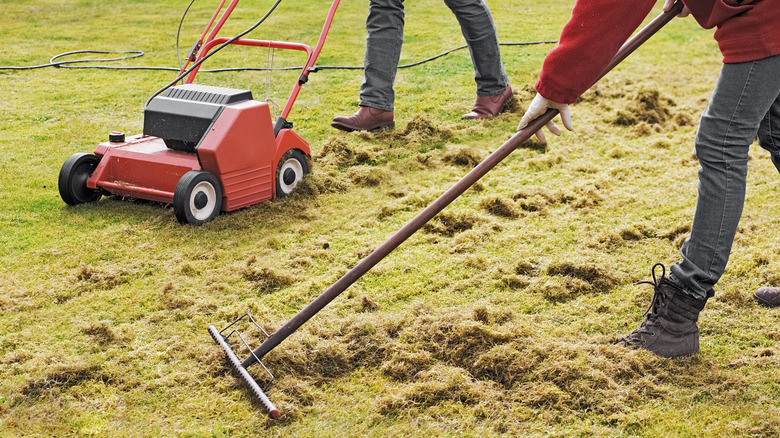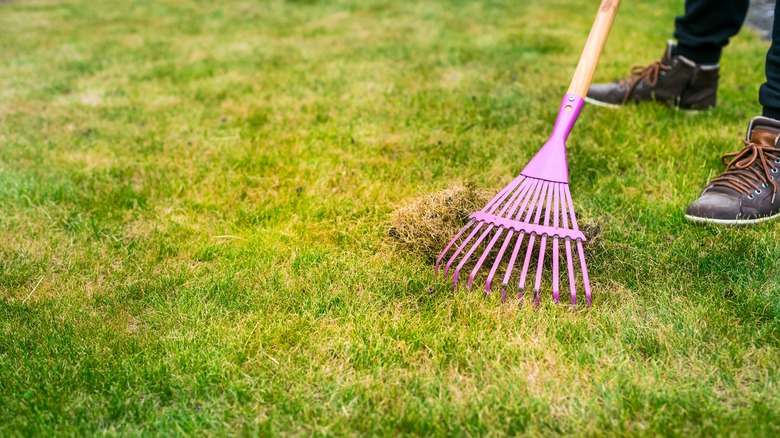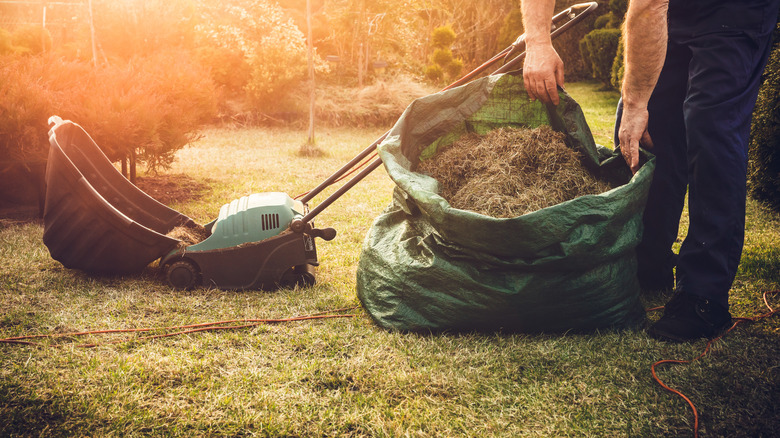The Best Time Of Day To Dethatch Your Lawn
When done well, lawn dethatching can boost the health of your grass, giving it a bright green color and the opportunity to flourish. However, you want to do it when your grass is at its strongest and able to hold up to a bit of strain. That's why dethatching in the cooler parts of the day when your grass is less stressed is ideal.
It's also best to dethatch during the active growing season, and that typically means any time during the late spring through early fall, depending on where you live. If you live in a colder area with cool-season grass, aim for the start of fall or the first few weeks of spring for the best results. For the warm-season grasses, you can wait until later in the spring through the start of summer for the best results.
Thatch is problematic, especially when it builds up. This material, which is a build-up of organic matter that's usually on top of the soil surrounding the blades of grass, can become quite thick. The goal is to dethatch the lawn during its growing period when the soil needs better access to nutrients and better moisture control. Thatch creates somewhat of a barrier for air, moisture, and other nutrients to get into the soil and down into the grass's roots, limiting its access to valuable nutrients necessary for healthy growth. Thatching isn't always necessary, but when there's a thick amount of this material present, it's likely limiting the success of your lawn.
Dethatch your lawn when it's least stressed
Choosing the best time to dethatch your lawn means selecting a part of the day when the grass is at the least stressed. You may not think of your grass going through stressful periods, but it can. For example, during the afternoon, temperatures in the area may be at their highest. This is when the soil is least moist, and the plant is battling the direct sunlight.
It's best to dethatch, then, when optimal growing conditions exist. Generally, that's early morning, before 10 am or 11 am. You also may wish to choose a day when the soil is slightly moist. It shouldn't be saturated, such as after a heavy rain, but soft enough that you can easily manipulate the thatch without pulling up the blades of grass in the process.
Another factor to consider is foot traffic. Grass doesn't perform at its best when there's significant foot traffic. If you are dethatching a yard that's frequently played in or an area with a lot of animals, keep people off the area for a day or so beforehand to give the grass time to recover. Often, foot traffic damage improves overnight, making the morning beneficial.
Signs your lawn needs dethatching
While the time of the year and day matters to a certain degree when it comes to dethatching, you also need to consider the circumstances that make it obvious that it's time to take on this lawn maintenance. There's no need to remove all thatch from the surface of the soil, but if that layer is more than 1 inch thick, it's getting in the way of your grass's access to nutrients. To measure, locate a random area of your lawn to check the thatch layer. Take a small garden shovel to dig up a small section of the lawn. This allows you to see a cross-section of the dirt. How much material is built up on top of the soil?
If you have areas of your grass that are near brush or wooded areas, there could be a higher level present. Look for areas of your lawn that don't seem to respond as well to fill out or may have weak growth overall. These areas may be struggling with nutrient access. You can thatch the entire yard or target areas of problems.
Also important, be sure to consider the overall conditions before dethatching. Choose a time when the grass isn't stressed from disease, drought, or super-high heat. Dethatching during this time could create more damage to the blades that are already struggling.


